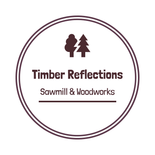Wood and epoxy resin have transformed the art of furniture making, interior design, and painting. These two combine the sheer beauty of wood and the hardness of modern resin to form beautiful, durable, and useful pieces of furniture or artwork. Whether you're working on a stunning river table, a beautiful hand-cut wooden coaster with resin inlays, or a safe resin-coated countertop, the wood and epoxy resin combination is infinite in its creative potential. So, what makes this combination so potent? Why does epoxy pair so beautifully with wood, and how can you utilize it to make sturdy, creative, and long-lasting pieces of work and in this we’ll explore the science, applications, and best practices of working with wood and epoxy resin.
The Science Behind Wood and Epoxy Resin
- Strong Adhesion: Epoxy resin creates a good adhesion with wood fibers, penetrating into pores and establishing a tight grip. This makes it a good choice for strengthening wooden surfaces, sealing cracks, and improving durability.
- Water and Moisture Resistance: Wood tends to take in moisture, causing warping or rotting. Epoxy resin seals, forming a waterproof layer which shields the wood from damage from the environment.
- Durability and Longevity: Epoxy resin is very resistant to wear, scratches, and UV light if properly cured. This guarantees that wood-resin art pieces or furniture remain intact for years without deterioration.

Why Wood and Epoxy Work So Well Together
- Aesthetic Appeal: The contrast of natural wood grains with the smooth, glass-like finish of resin provides an uncommon, eye-grabbing appearance. Either transparent or colored, resin makes the wood look even more beautiful by adding depth and color.
- Structural Reinforcement: Resin reinforced wood by filling the weaker areas, cracks, and knots. This helps the end product be robust and less susceptible to breaking under stress.
- Customization and Creativity: From river tables to wall art, epoxy is limitless in its creativity. It can be combined with pigments, metallic powders, or inserted objects to create different effects.
Applications of Wood and Epoxy Resin
Epoxy resin and wood are both employed extensively in various applications, from furniture making to artistic decor and home makeover. Live-edge epoxy tables, resin-coated wooden countertops, and handcrafted chairs or benches are typical products in furniture design. In art and décor, epoxy resin wall art, wooden jewelry with resin inlays, and decorative coasters or trays add a touch of creativity to homes. Besides that, epoxy-coated wooden flooring and wood repairing with epoxy fillers enhance floors and repairs in terms of being stronger and aesthetic.
How to Work with Wood and Epoxy Resin
Choosing the Right Wood
Hardwoods like walnut, oak, and maple are best because they are dense and hard. Soft woods can be used, but they require additional preparation and sealing.
Surface Preparation
Before applying epoxy resin, the surface should be well prepared:
- Sanding: Sand the wood surface and remove any debris.
- Sealing Cracks: Seal cracks or holes to prevent air bubbles.
- Cleaning: Give a dust-free surface for a spotless finish.
Mixing and Pouring Epoxy Resin
- Correct Ratios: Follow instructions to permit proper curing.
- Bubbles: Release trapped air with a heat gun or blow torch.
- Layering: Heat is prevented from building up and strength is added by pouring in thin layers.
Curing and Finishing
- Give Sufficient Curing Time: Typically, 24-72 hours, depending on temperature and resin.
- Sanding and Buffing: A glass-like appearance is obtained by sanding using fine grit paper and then buffing for clarity.
- UV Protection: Resins become yellow with age; a UV-resistant topcoat extends life.

Common Mistakes and How to Avoid Them
Since improper mixing of epoxy and hardener will produce a sticky or brittle finish, accurate measurement is absolutely necessary. Air bubbles or unequal absorption from improperly sealing the wood before applying resin might result in flaws in the finished product. In addition, the use of shortcuts or excess heat to hurry the curing process can compromise the structure and result in a less long-lasting product. For optimal results, patience and precision are necessary.
Creative Projects You Can Make with Wood and Epoxy Resin
If you need inspiration, here are some creative activities you can attempt:
- Epoxy River Tables: Blending live-edge wood slabs and resin to design stunning dining or coffee tables.
- Resin-Inlaid Cutting Boards: Upgrading wooden cutting boards with bright resin patterns.
- Wood and Resin Clocks: Introducing distinctive clocks to interior decoration.
- Wall Decorations and Signages: Blending wood carving with resin filling for customized home decor.
Considering their complementary structural, aesthetic, and functional qualities, wood and epoxy resin are an ideal fit. There are countless creative possibilities for creating furniture, artwork, or home décor with this combo. With the proper techniques, you can make durable and lovely pieces that withstand centuries. To see quality wood and epoxy designs, visit Timber Reflections.

Leave a comment